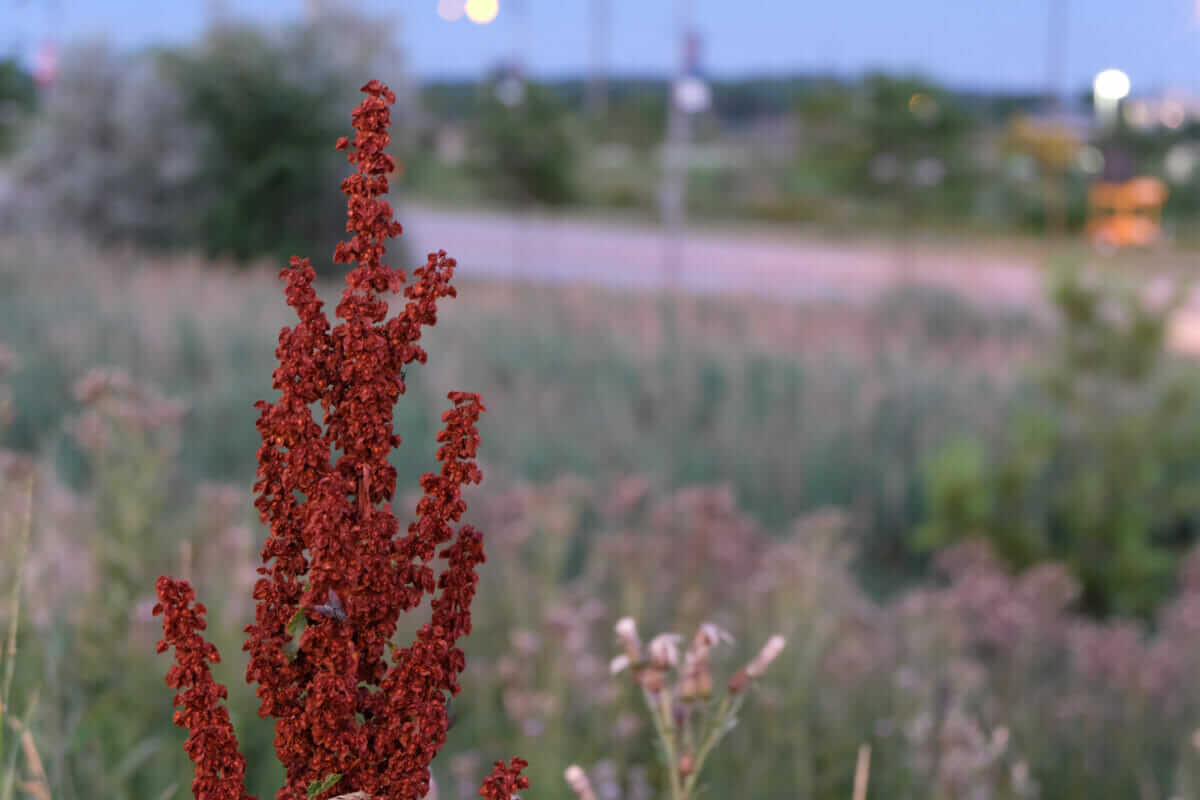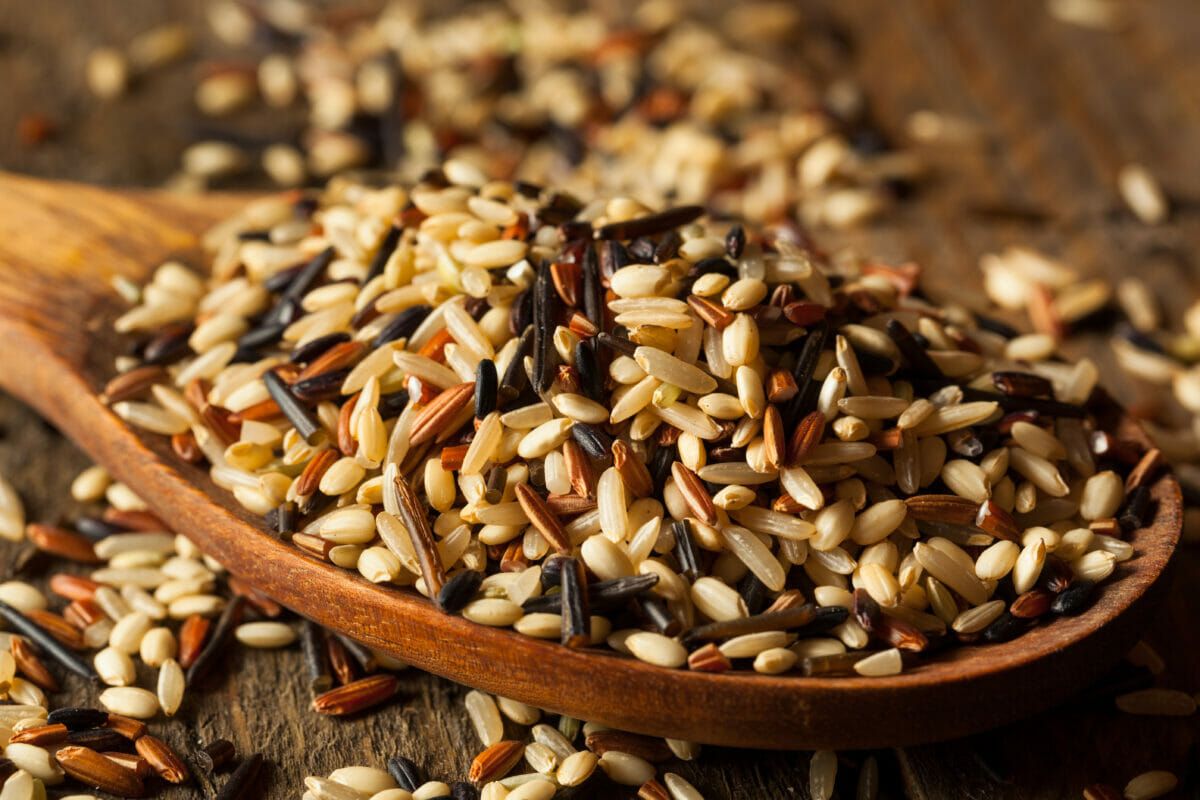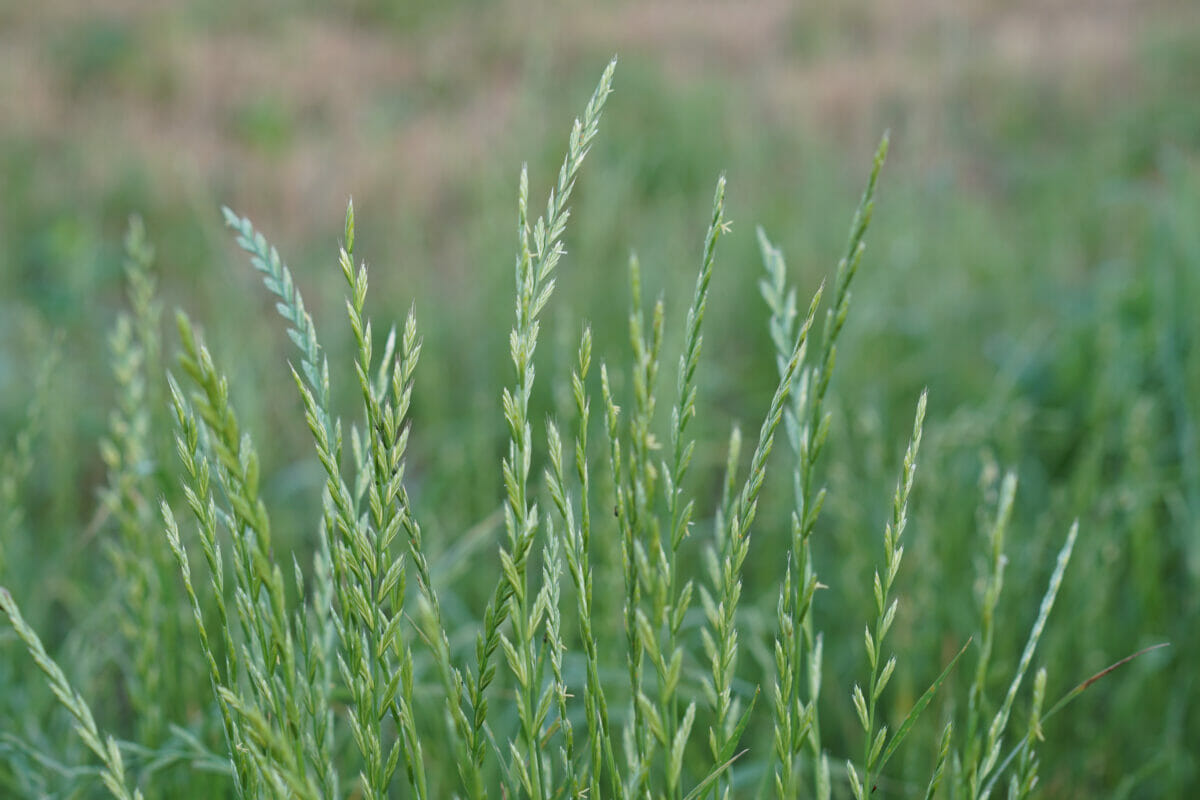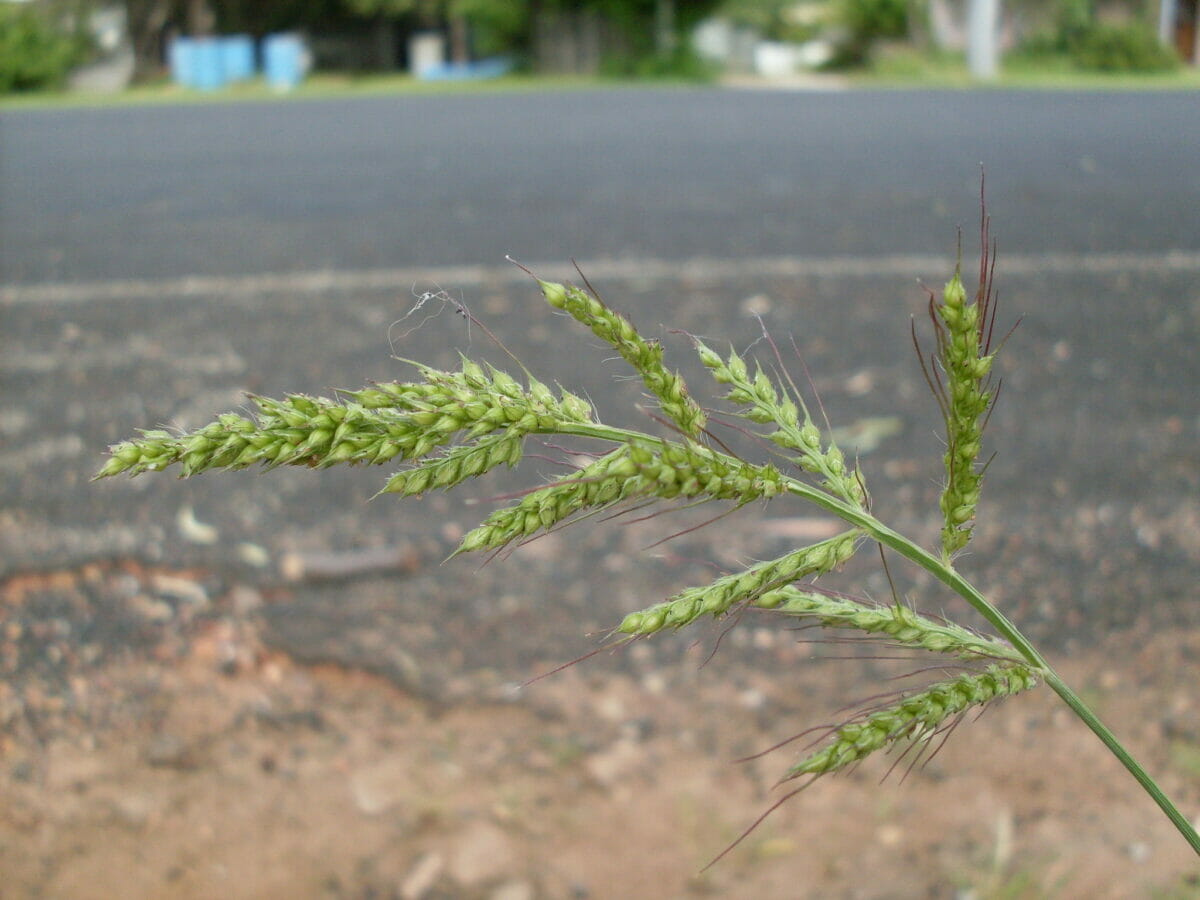A guide to wild plants that contain edible seeds worth grinding, boiling and eating.

If you’re looking to expand your pantry—and to move away from some of the kitchen’s more expected carbohydrates—wild grains may be for you. As a category, wild grains are defined as uncultivated grains that grow naturally and have been used for centuries as a source of sustenance. From the seedpods of foraged grasses to the familiar seeds that constitute aquatic wild rice, wild grains run the spectrum in terms of use and flavor profile.
Here are five wild grains—some of which may be growing in your own backyard—with which you can cook or bake.

A mature curly dock plant in its seed stage. Photo by TippyTortue/Shutterstock.
Curly Dock
A plant that thrives in wooded and moist areas, curly dock is an invasive species that can easily be harvested for home use. Seeds can be toasted, husks intact, and ground into a buckwheat-style flour. (Like buckwheat, it has an attendant bitterness and benefits from a blend with other flours when used in baked goods.)
Curly dock is fairly recognizable, with a low-growing, green-leafed plant that sprouts tall, narrow red flowers in spring. The seeds that can be used for cooking appear in late summer and fall and are brown in color and oval in shape. Grind the dried seeds into flour in a spice grinder or with a mortar and pestle. The flour can be used in everything from brownies to bread to crackers.

Lamb’s quarters is a common plant of meadows and fields. Photo by Ungrim/Shutterstock.
Lamb’s Quarters
Part of the amaranth family (of which quinoa is also a member), lamb’s quarters function both as greens and as grains. The plant’s leaves can be harvested and cooked the way most greens are (sauté them with garlic in oil for a tasty side). The seeds, however, are the substantive wild grain in this plant, and they can be used to make a light, flexible flour.
Harvest the seeds in fall and separate the outer layer from the inner seed. The seeds can then be dried and ground into flour to be used in a dense style of bread. Uncooked lamb’s quarters seeds contain an ingredient that is toxic to humans, so the seeds—and their attendant flour—must be cooked before eating.

Wild rice isn’t actually rice at all. Photo by Brent Hofacker/Shutterstock.
Wild Rice
Wild rice is not technically rice and is, instead, a type of seed from a different type of aquatic plant. The grain grows in marshlands, rivers and creeks in the northern United States and in Canada. Its seeds, which are high in protein, iron and potassium, float above the water and are often the target of waterfowl.
This gluten-free alternative to other types of rice can be boiled on the stove (a firm grain, it takes a long time to cook, so give yourself at least 45 minutes), fluffed and served to complement protein or vegetable dishes.

Wild rye is also called perennial ryegrass. Photo by Doikanoy/Shutterstock.
Wild Rye
Also known as ryegrass, wild rye grows prolifically in the northern United States and in parts of Canada. The wild grain can be used in a number of iterations, including a porridge or “breakfast mush”: Rye chops, or rough-cut rye berries, are soaked in hot milk and eaten like oatmeal. Rye berries can be cooked in boiling salted water, too, and treated almost like pasta. Eat them after they’ve become tender, as part of a grain bowl, accompanied by vegetables or with butter and cheese.
Wild rye berries can also be dried and ground in a spice grinder for a nutrient-dense flour that can be used in bread-baking.

You might already be growing barnyard grass in your backyard. Photo by John Tann/Creative Commons
Barnyard Grass
This backyard weed—its scientific name is Echinochloa crus-galli—grows throughout the United States and Canada. It’s the seed of this plant, and not the grass blade, that can be used in cooking. The imminently flexible seeds, in fact, can be ground into flour, like most grains, but they can also be roasted, boiled and even popped into a food resembling popcorn.
Barnyard grass falls into the millet family and is used throughout the world in similar applications. In Asia and India, the seeds are processed into a pearl grain. The prolific weed has also been shown to increase HDL (“good”) cholesterol and to stabilize blood sugar levels.
I’ve tried many foods that sustained Native American populations in North America. The grasses are usually inedible without a lot of work to thresh and winnow the husks. Makes my teeth hurt just to write this. And that includes the wildrye mentioned here. The one exception is Indian ricegrass. You can cut a bunch of it when it is dry, put a match to it, and the delicious seeds fall out into your hand or pan, roasted and ready. By the way, there is no such thing as “the millet family”. Millet is in the Grass family, just like the… Read more »
Thanks for this interesting article! I recognize several of these plants from my upper pasture. I’m going to look for them this summer.